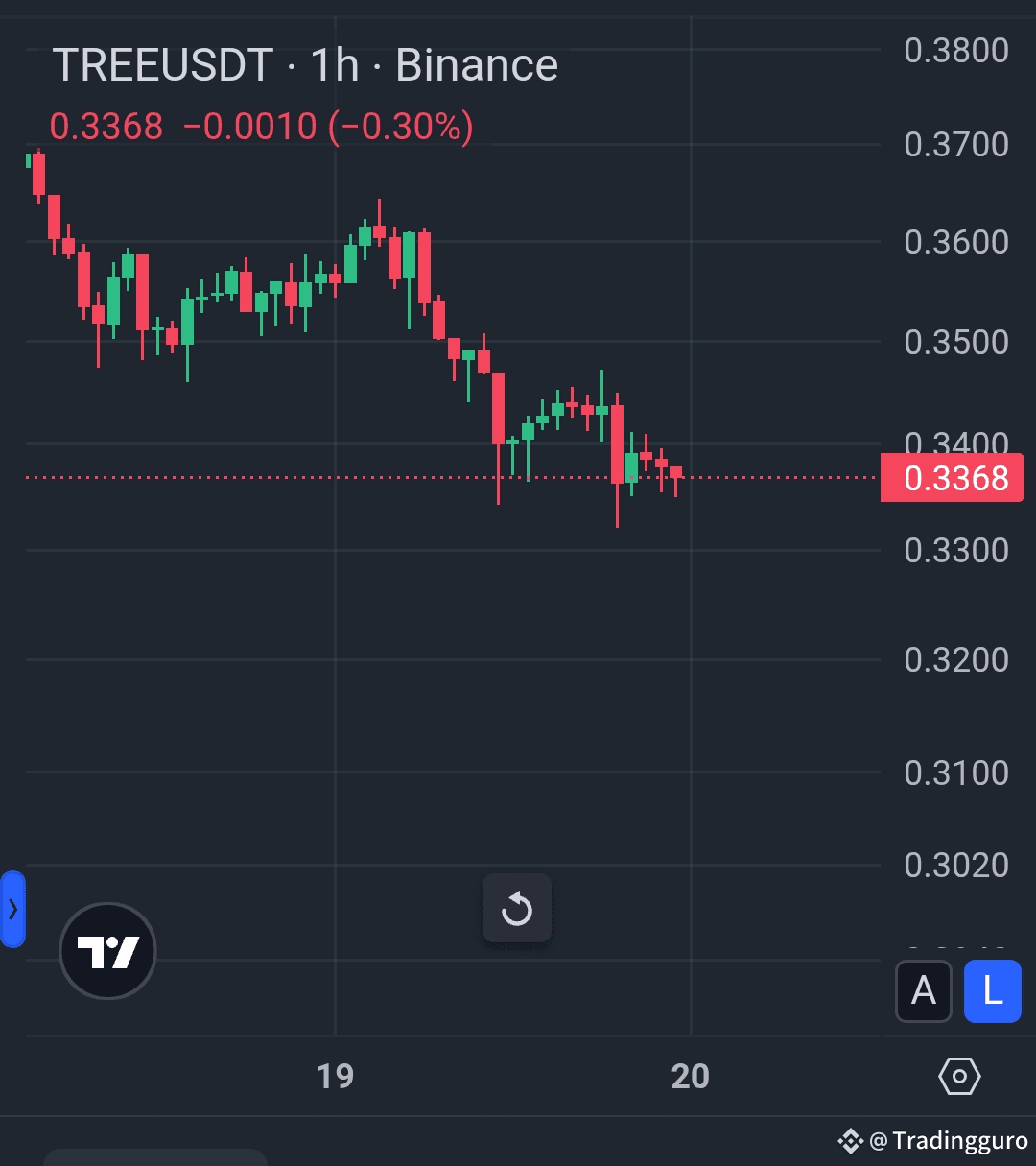$TREE /USDT – Short Trade Signal (1h Timeframe)
Current Price: 0.3368
Support Level: 0.3320
Resistance Level: 0.3450
Entry Zone: 0.3385 – 0.3420
Trade Targets
TP1: 0.3300
TP2: 0.3220
TP3: 0.3150 (final target)
Stop Loss: Above 0.3460
TREE is showing a steady downtrend after failing to hold above 0.3500. Sellers are controlling the market and the price is pressing close to support around 0.3320. A break below this level with volume can push the coin lower. Short entries are safer near resistance pullbacks, aiming for lower support zones.

One of the hardest truths about crypto is that most people don’t actually know what their money is doing once it leaves their wallet. Tokens get staked, borrowed against, farmed, or swapped, and before long a user has half a dozen positions scattered across different chains and platforms. Keeping track of value, yield, and risk begins to feel less like managing a portfolio and more like doing detective work. Treehouse is one of the few projects attempting to solve this problem head-on. Rather than building yet another DeFi application, it positions itself as an analytics and intelligence layer, turning chaotic on-chain activity into something investors can actually understand and act upon.
The core idea behind Treehouse is simple: it is not about yield farming or launching a flashy new token. Its goal is to make DeFi portfolios readable, measurable, and manageable in the same way that traditional brokerage apps make stock portfolios easy to track. To achieve this, Treehouse integrates data across multiple blockchains, wallets, and protocols, collecting information at the transaction level. It then normalizes that data into a common language of positions, profit and loss, annualized yields, and risk metrics. Finally, it visualizes the results through dashboards, reports, and historical trendlines that feel more like institutional-grade portfolio management tools than raw blockchain logs. Instead of just telling a user “you have X tokens,” it tells them how those tokens are performing, what risks they carry, and how the strategy has evolved over time.
This matters because most DeFi participants are not quants. They don’t have complex Excel models running on token movements or the ability to calculate impermanent loss across multiple pools. Without proper clarity, they are often forced into blind trust, or worse, panic when markets swing. Treehouse’s analytics give retail users a fair chance to understand their exposure, provide institutions with a framework to justify and report DeFi allocations with credible risk metrics, and offer builders a transparent layer they can integrate into their own financial products. In short, Treehouse is trying to make DeFi usable for anyone who takes financial reporting seriously.
What makes Treehouse stand out is its focus on risk, not just returns. While many dashboards chase eye-catching APYs and reward hype, Treehouse emphasizes volatility, drawdowns, and stress testing—showing the downside just as clearly as the upside. Its ambition is institution-grade, designed not only for retail traders but also for funds and organizations that require audit-ready data to participate in decentralized finance. And it delivers more than static charts: its actionable intelligence is meant to guide rebalancing, hedging, and allocation decisions, providing genuine decision-making support rather than surface-level metrics.
That said, Treehouse’s promise is ambitious, and the execution will be challenging. Data accuracy remains a constant battle in a world where blockchains are noisy and DeFi protocols update at breakneck speed. Its business model is also an open question—whether it monetizes through subscriptions, enterprise SaaS deals, or embedding analytics into partner applications. Most critically, trust is non-negotiable. Users must believe the numbers they are shown, and even minor discrepancies could undermine credibility quickly. If Treehouse can overcome these hurdles, it has a real shot at becoming the Bloomberg Terminal of DeFi.
In a market that often thrives on hype and speculation, Treehouse is refreshingly practical. It doesn’t promise “10x yields” or claim to be “the next ETH killer.” Instead, it promises clarity—a rare and valuable commodity in crypto. For everyday investors, that clarity can mean better decisions and fewer mistakes. For institutions, it could be the missing piece that makes large-scale DeFi allocations possible. If crypto is ever going to mature into real, trustworthy finance, projects like Treehouse that focus on data, transparency, and risk are not optional—they are essential.
♡𝐥𝐢𝐤𝐞💬 ➤ @Treehouse Official | #Treehouse |



